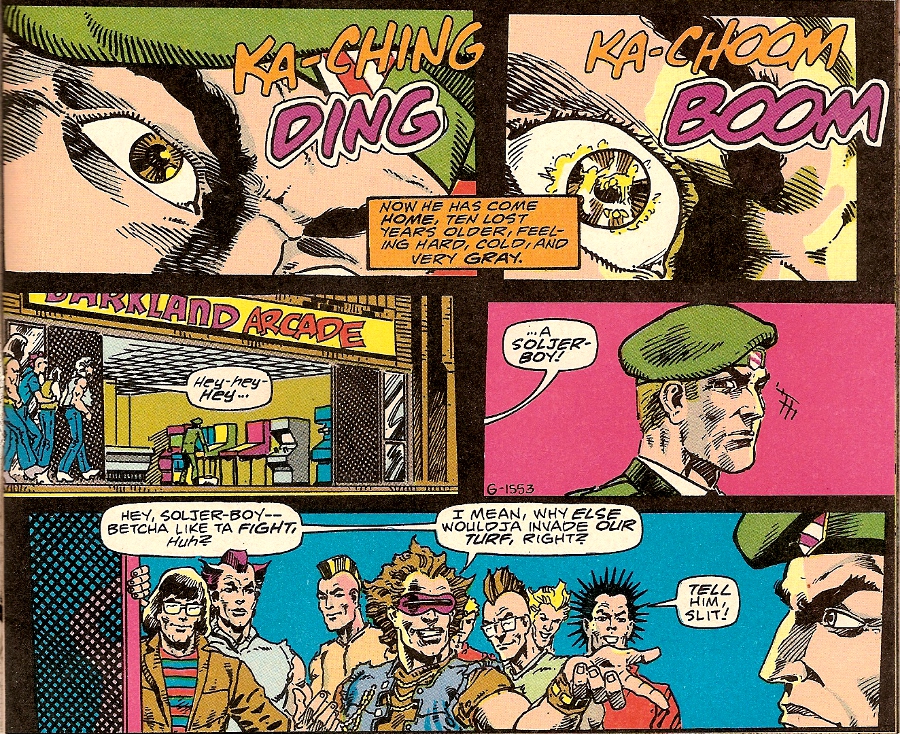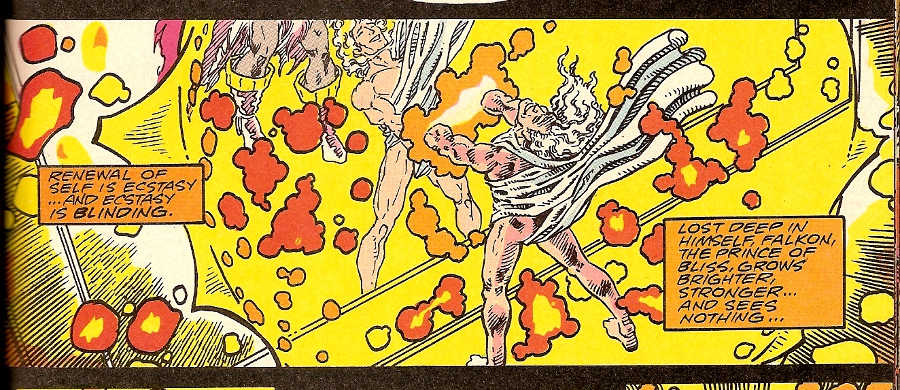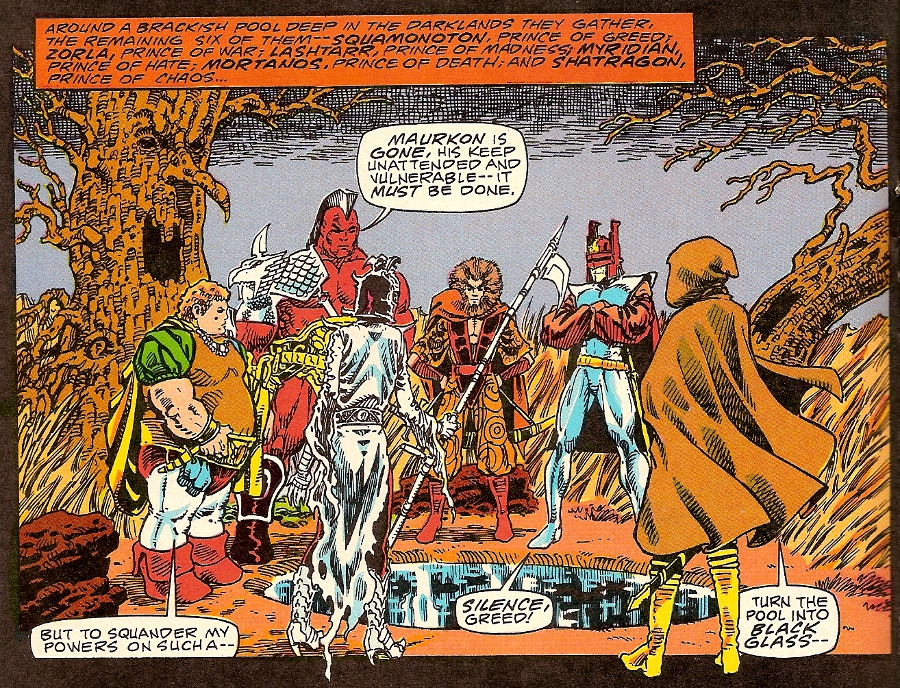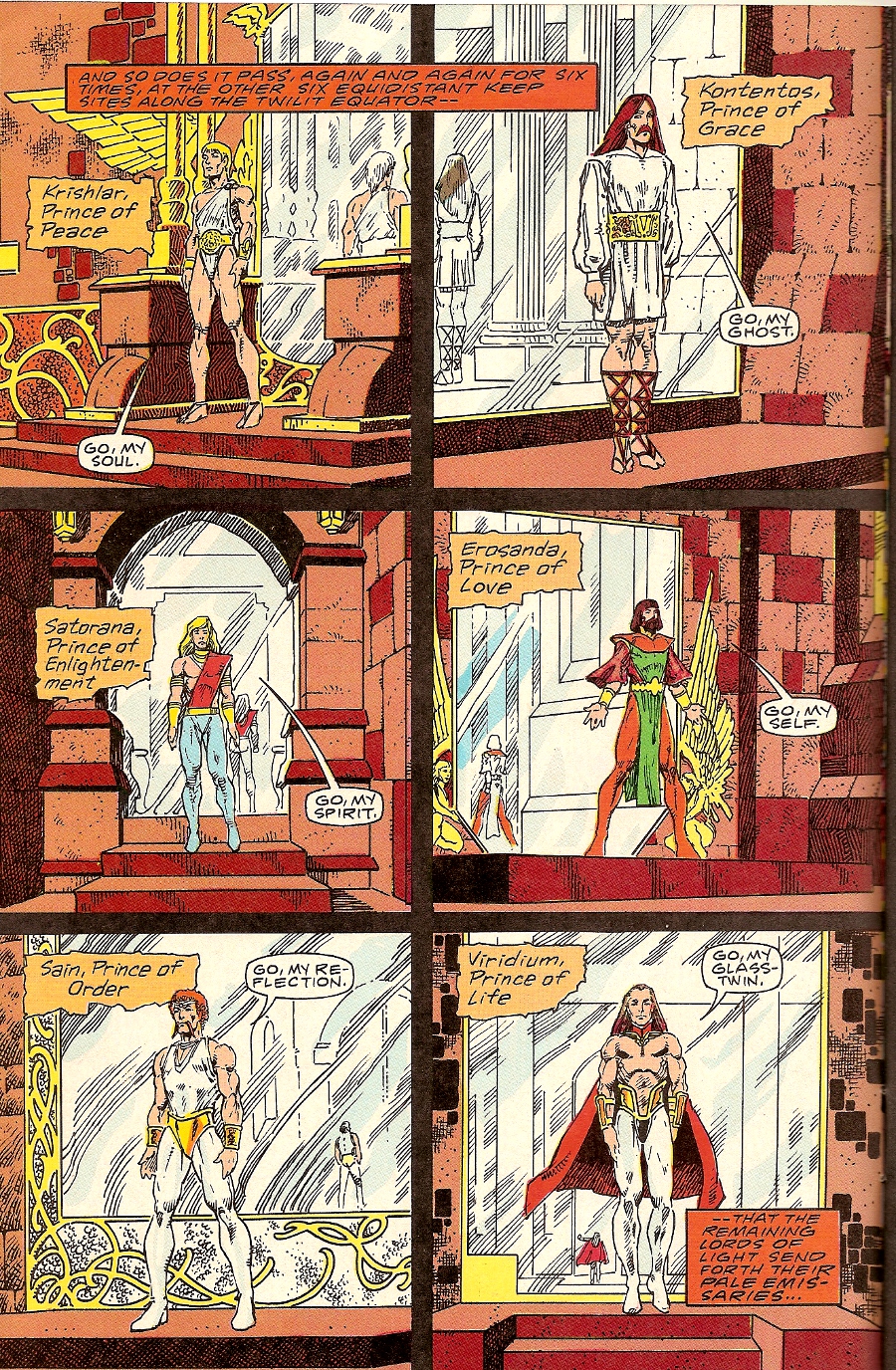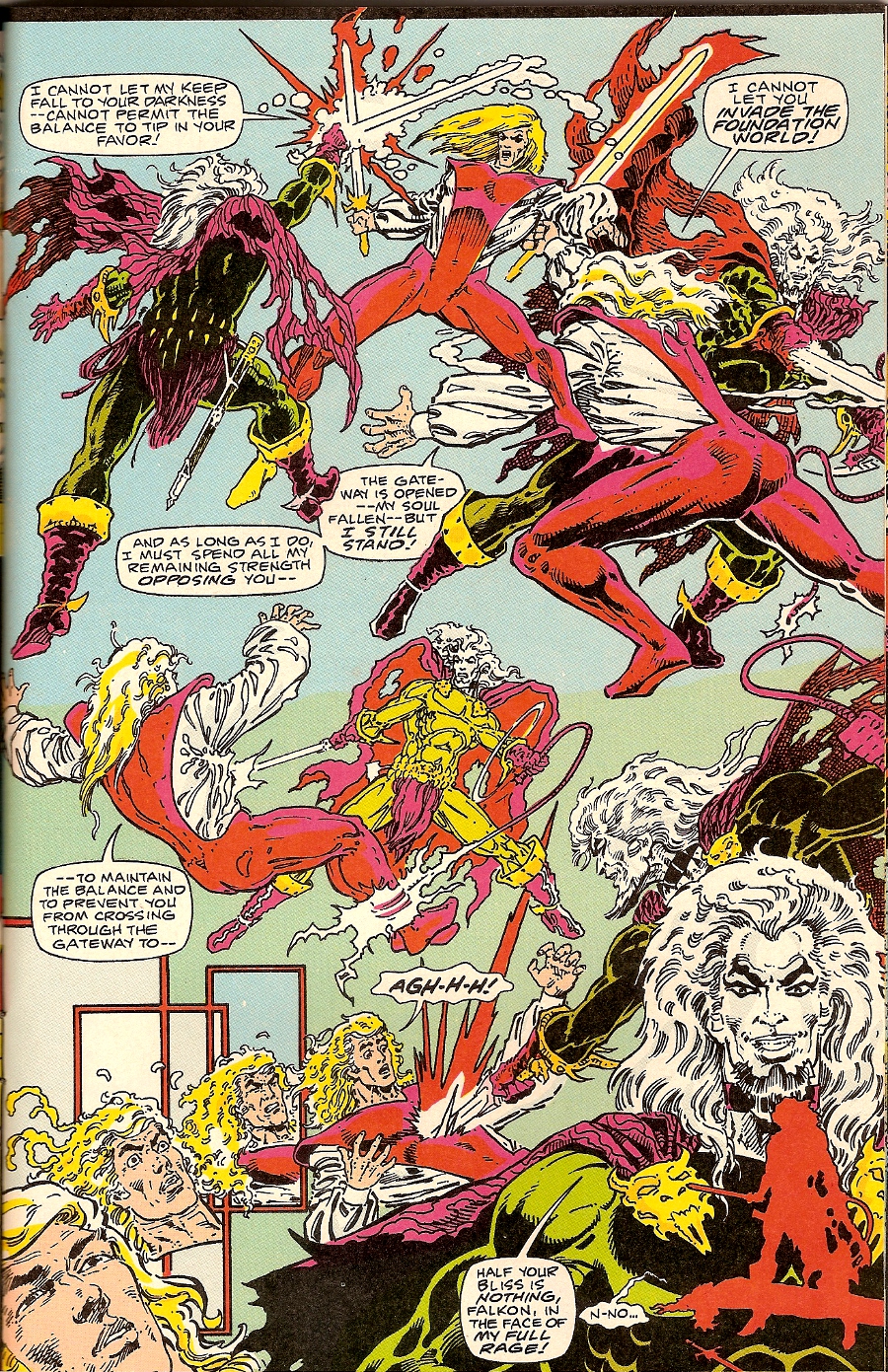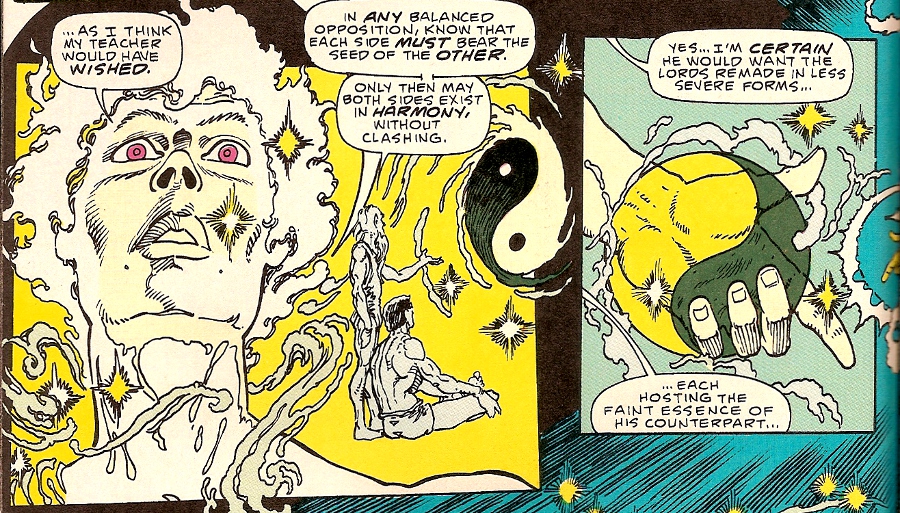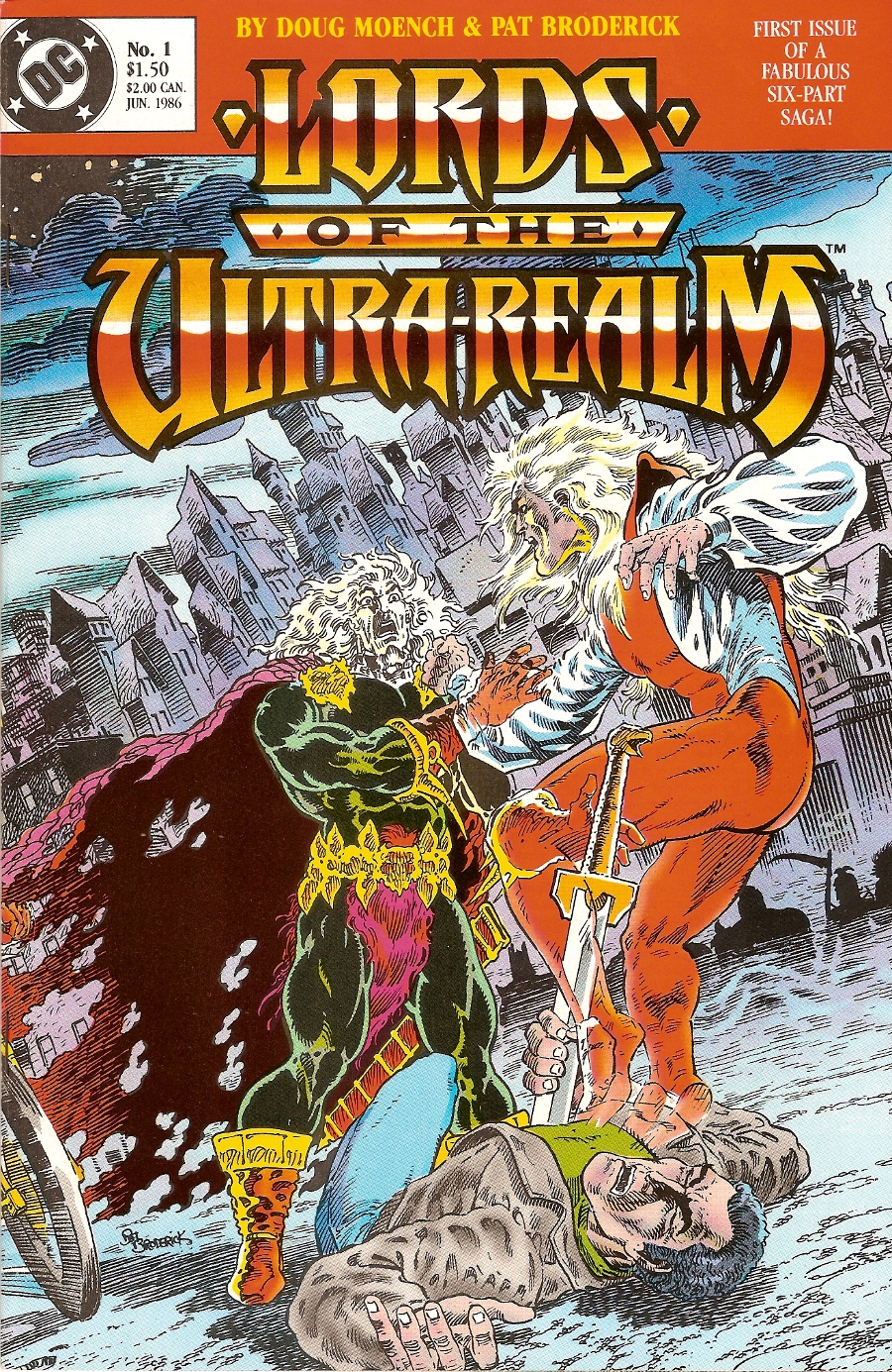 1986 was DC’s year, the year of Frank Miller’s Batman: The Dark Knight Returns and Alan Moore and Dave Gibbons’s Watchmen, as well as the final issues of Crisis on Infinite Earths and John Byrne’s reboot of Superman. But DC also had some less successful experiments during this time, like Electric Warrior and Lords of the Ultra-Realm
1986 was DC’s year, the year of Frank Miller’s Batman: The Dark Knight Returns and Alan Moore and Dave Gibbons’s Watchmen, as well as the final issues of Crisis on Infinite Earths and John Byrne’s reboot of Superman. But DC also had some less successful experiments during this time, like Electric Warrior and Lords of the Ultra-Realm
Lords of the Ultra-Realm was a 6-issue limited series written by Doug Moench and illustrated by Pat Broderick. It was a fantasy series that took place partially on our Earth and partially on a parallel world populated by the stuff of dreams, avatars of love and hate and rage and bliss and yada-yada-yada. Think of Roger Zelazny’s Amber series strained through 1970’s-vintage Marvel Comics cliches, in much the same way that Moench’s Weirdworld stories (including Warriors of the Shadow Realm) borrowed themes and elements from Tolkien and turned them utterly pedestrian.
The story opens with Vietnam Vet Michael Savage (not the talk radio host) playing pinball after his return to America. A street gang decides to hassle the soldier, and right away, even on this first page, you can see the strengths and weaknesses of the book.
On the one hand, Broderick’s art is solid and nicely-detailed. Broderick was never my favorite artist. He always turned in a decent job–decent layout with solid-looking figures and a nice amount of detail. But where other artists made what they did look graceful and effortless (even when it wasn’t)–guys like Steve Rude and Art Adams and Michael Golden–Broderick’s art always looked like he was sweating bullets with every panel, the figures a little too stiff and the facial features just a bit off.
Lords… features probably the best rendering job I’ve ever seen from Broderick–he not only pencilled, but also inked and colored–but his character design was not the best. Look at that street gang in the bottom panel (and yes, that guy’s name is indeed Slit). This is like a bad comic book interpretation of a bad Hollywood version of a street gang.
Anyway, back to the story. Just at the time that Savage is being hassled, on the parallel world of Ultra-Realm (a world which is made of the hopes, dreams and fears of mankind, and therefore possesses one side which is eternally dark and another which is eternally light), Falkon, Lord of Bliss, is “renewing” himself with his magic mirror and his skimpy toga.
And this is where you can tell the story has wandered into shitty cliche fantasy and will probably never find its way back out. Because the bad guys wear badass armor and actually do stuff, while the good guys wander around in white togas like H.G. Wells’s Eloi from The Time Machine and wet themselves whenever evil decides to show its face.
Seriously, compare the bad guys of Ultra-Realm…
To the good guys.
On the bad side, there’s a fat guy, a red guy with a mohawk, a skeleton guy, a guy in a weird hood… You’ve got a group of visually distinctive guys (and girls when they transform into their female aspects) with distinctive personalities as well. On the good side, you’ve got a bunch of interchangeable white douchebags who only vary in their choice of bad hairstyles and porn mustaches.
Anyway, Falkon dies after a swordfight with his opposite number, the Lord of Rage.
But Michael Savage, the earthly archetype of both Bliss and Rage, is transported to the Ultra-Realm where he takes over Falkon’s body and begins killing his way through the Lords, both Light and Dark, to restore balance to the Ultra-Realm. He is aided by a female journalist and by his former boxing trainer and a buddy from ‘Nam, whose only dramatic function (seriously) is to get killed at a climactic moment, thus driving Savage into a berserker rage that allows him to defeat the Dark Lords.
The big finale involves Savage becoming the “Overlord” of the Ultra-Realm and using his godlike powers to bring back the Lords, giving Moench the chance to add a little bit of crappy philosophy to his crappy plotting, crappy exposition, and crappy dialogue, although I do like the way Broderick mimics P. Craig Russell’s style in this one panel.
In the end, although in a lettercolumn Moench said there were plenty of stories to tell in the Ultra-Realm, DC only ever went back once, for a one-shot special the next year which was apparently not well received. Which was just as well. Look, 1986 was an extraordinary year, but they couldn’t all be winners.


